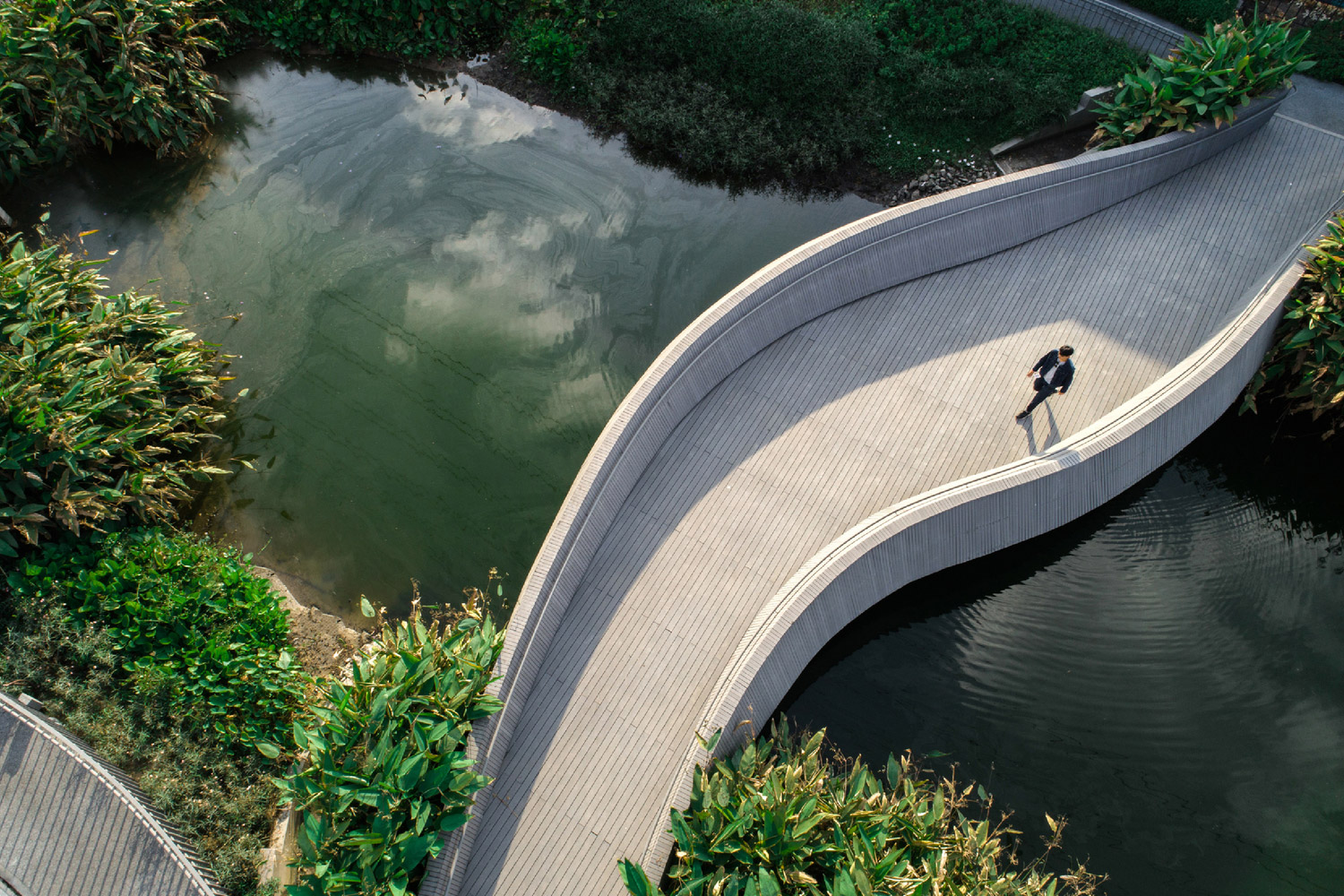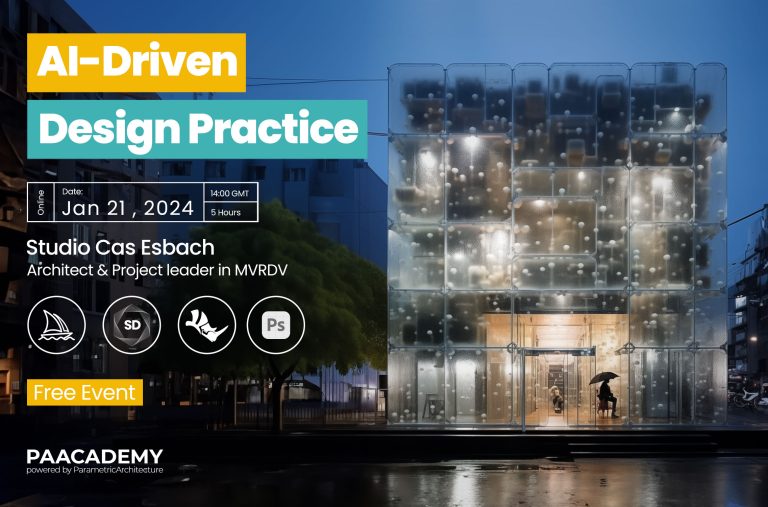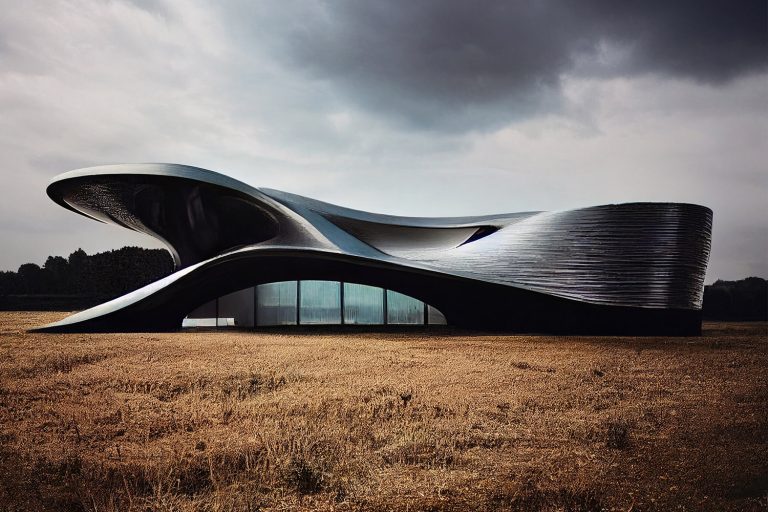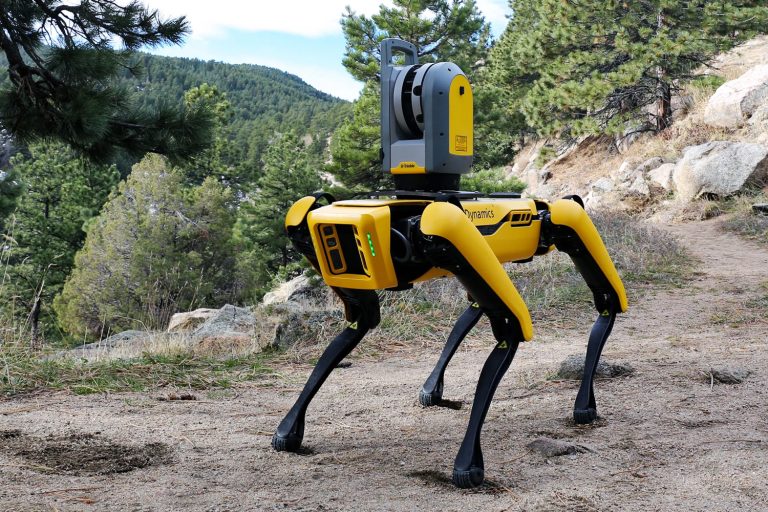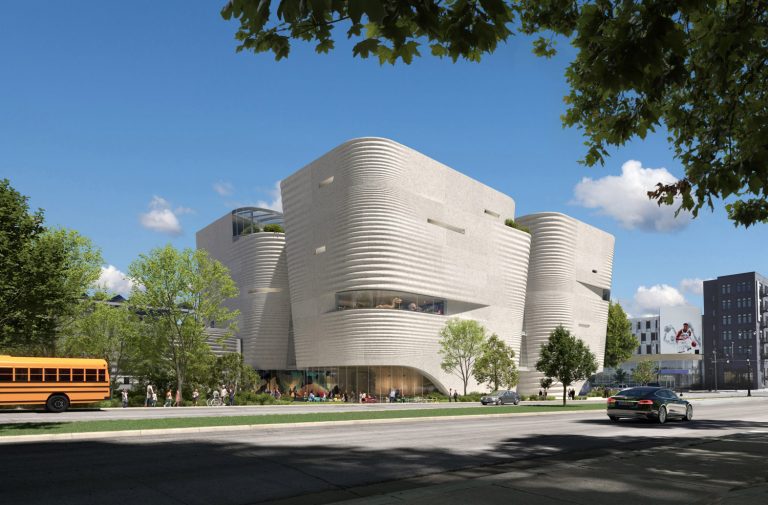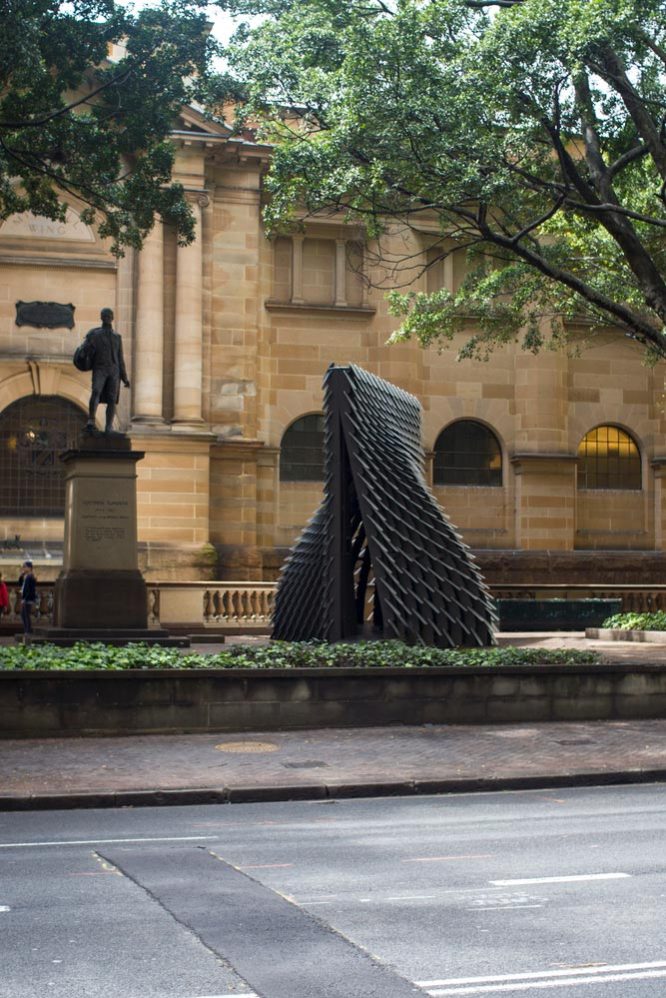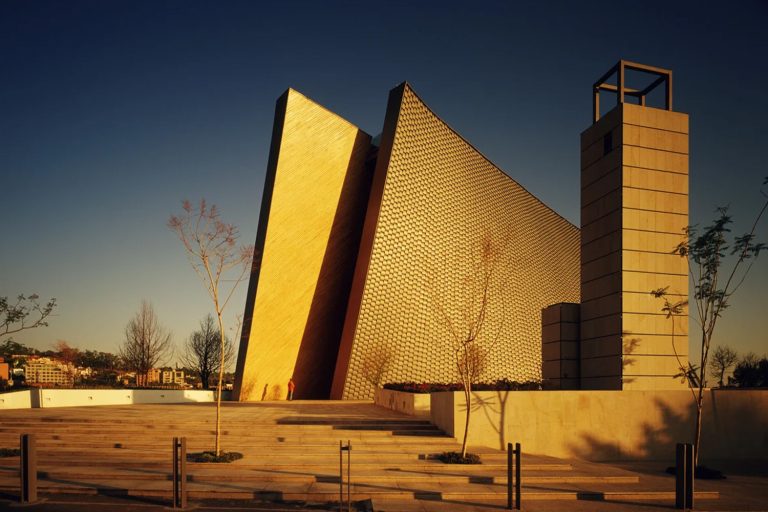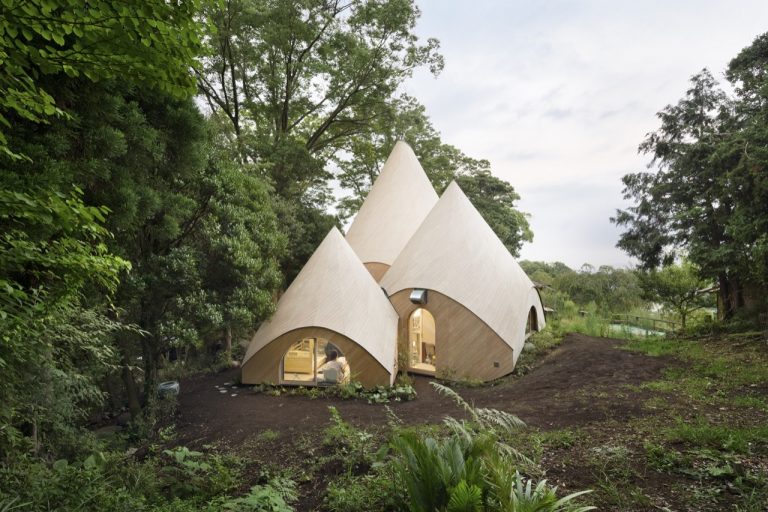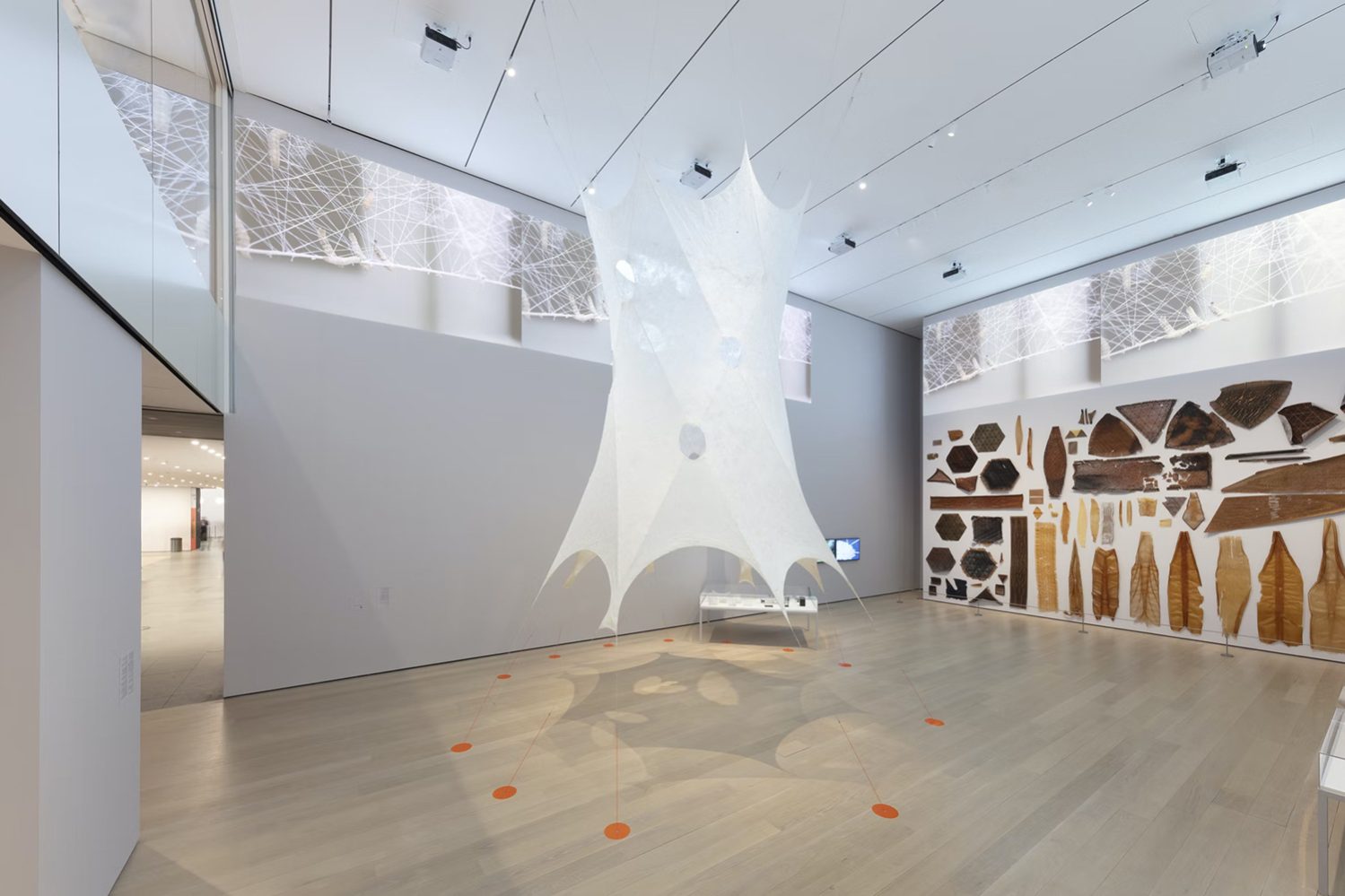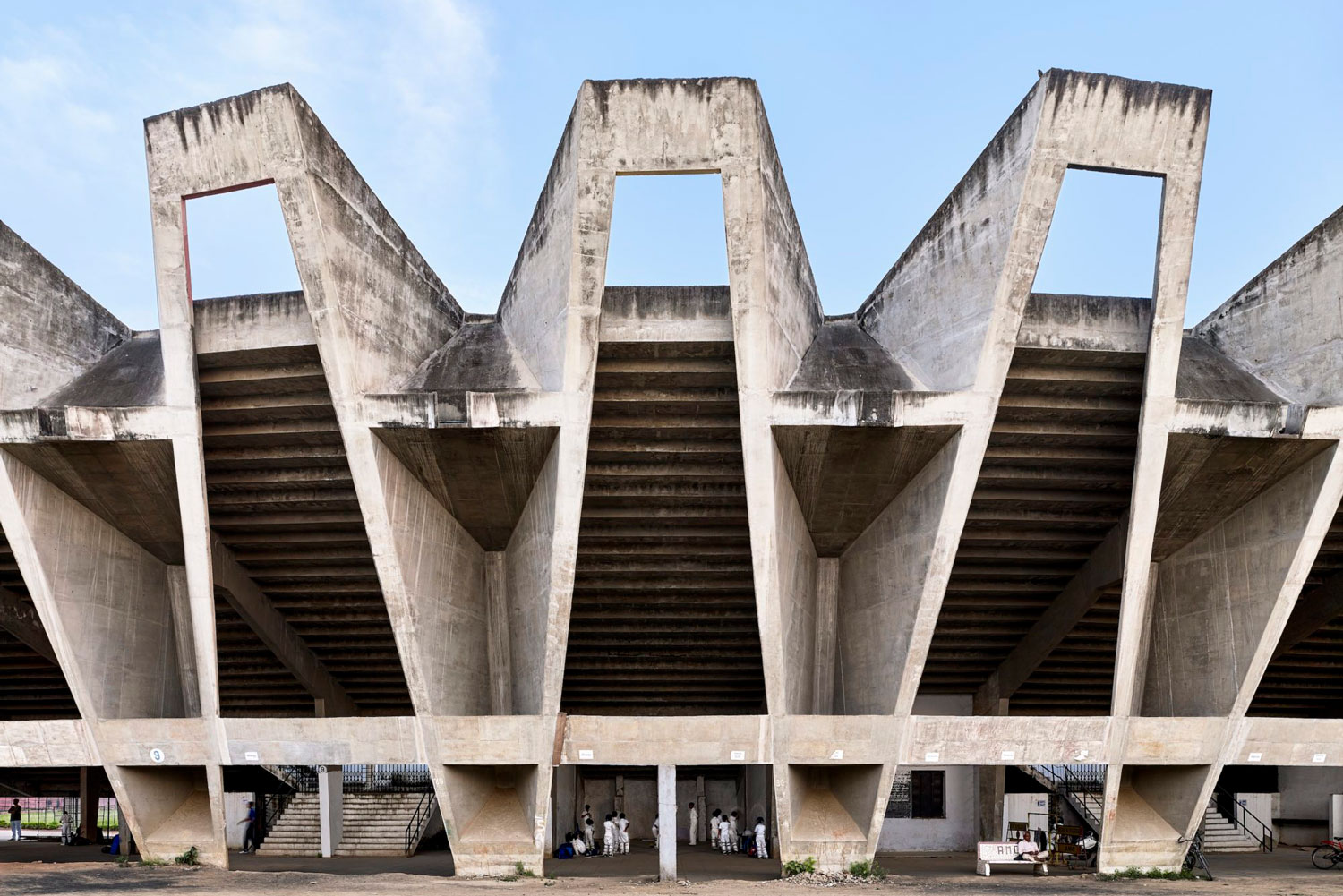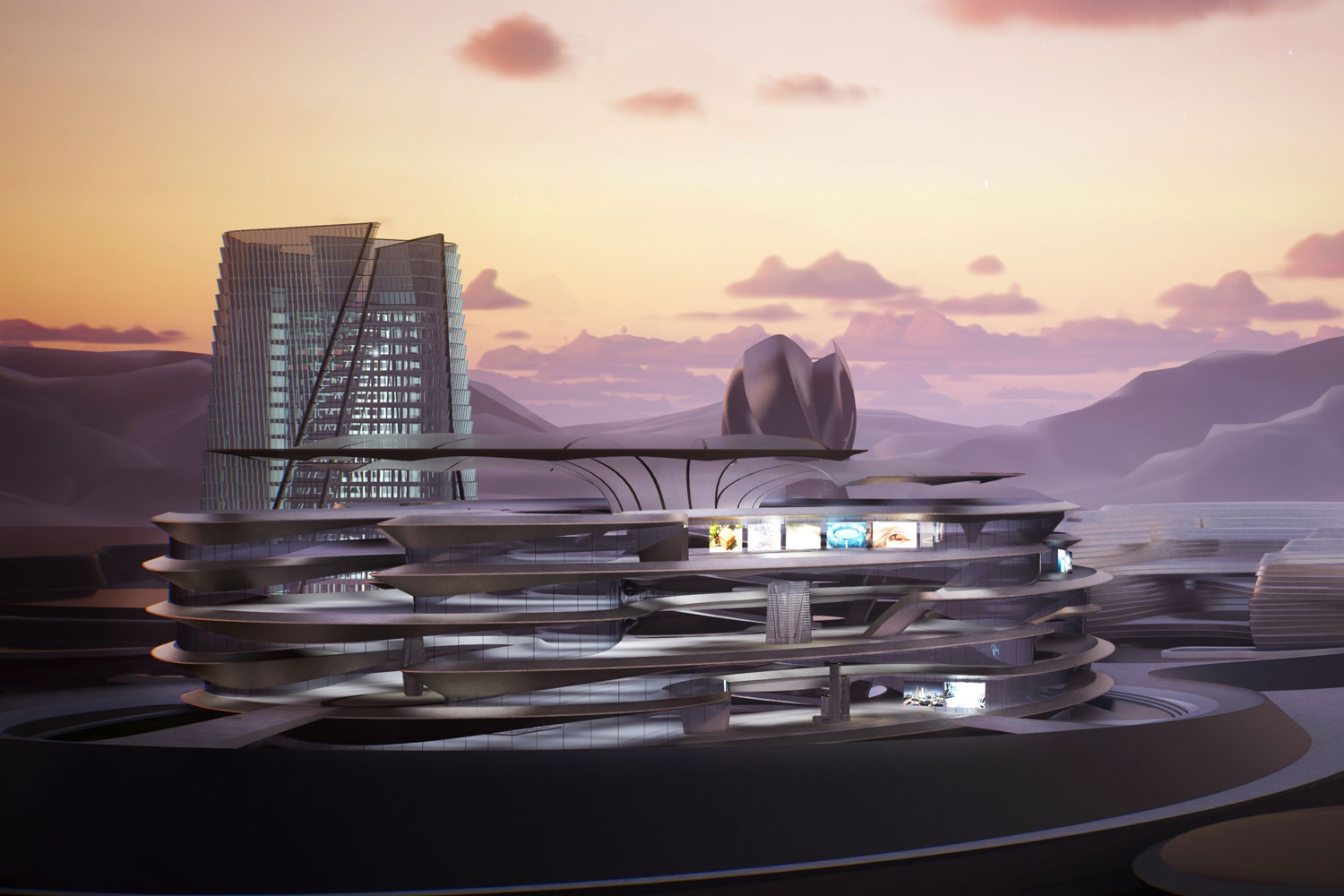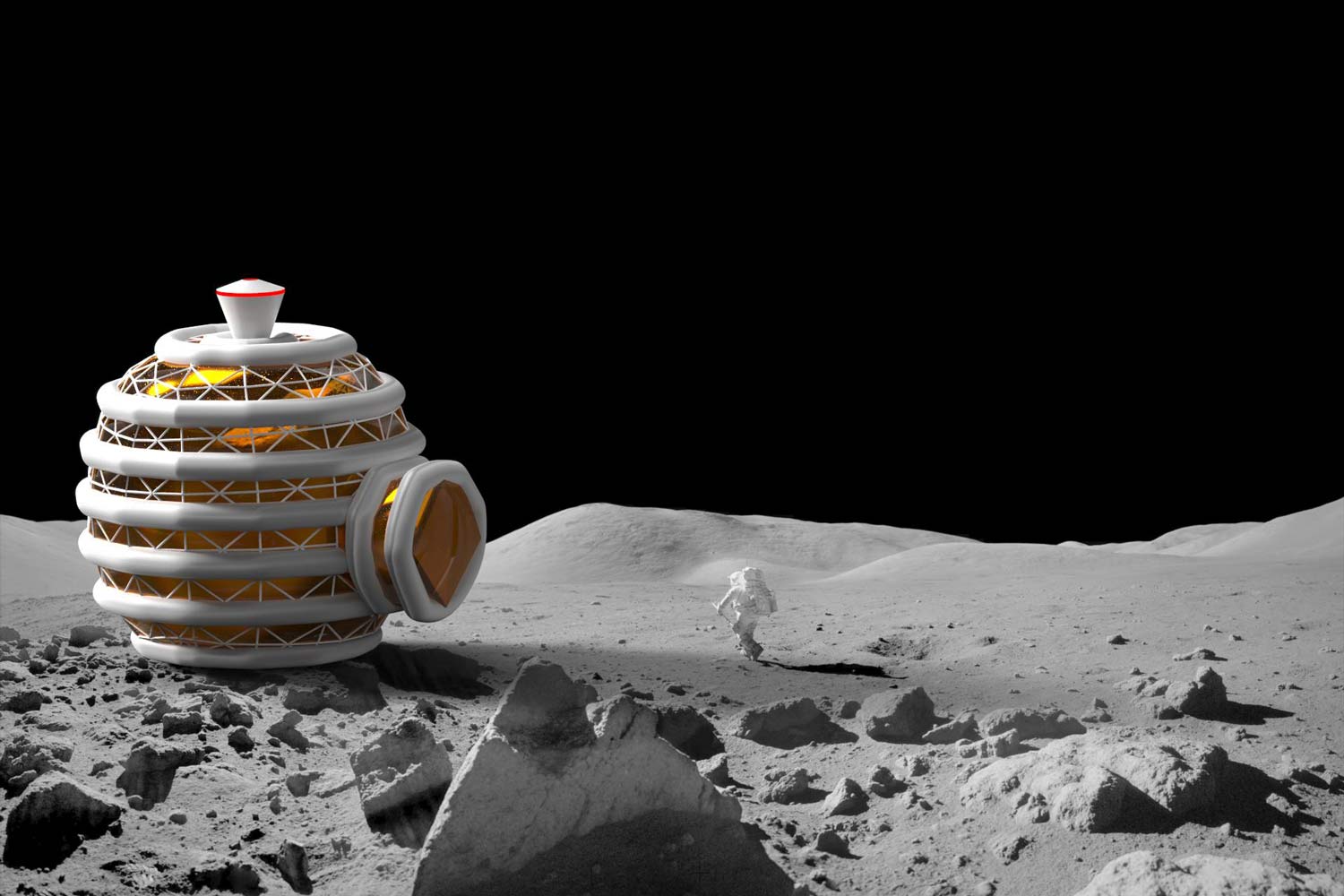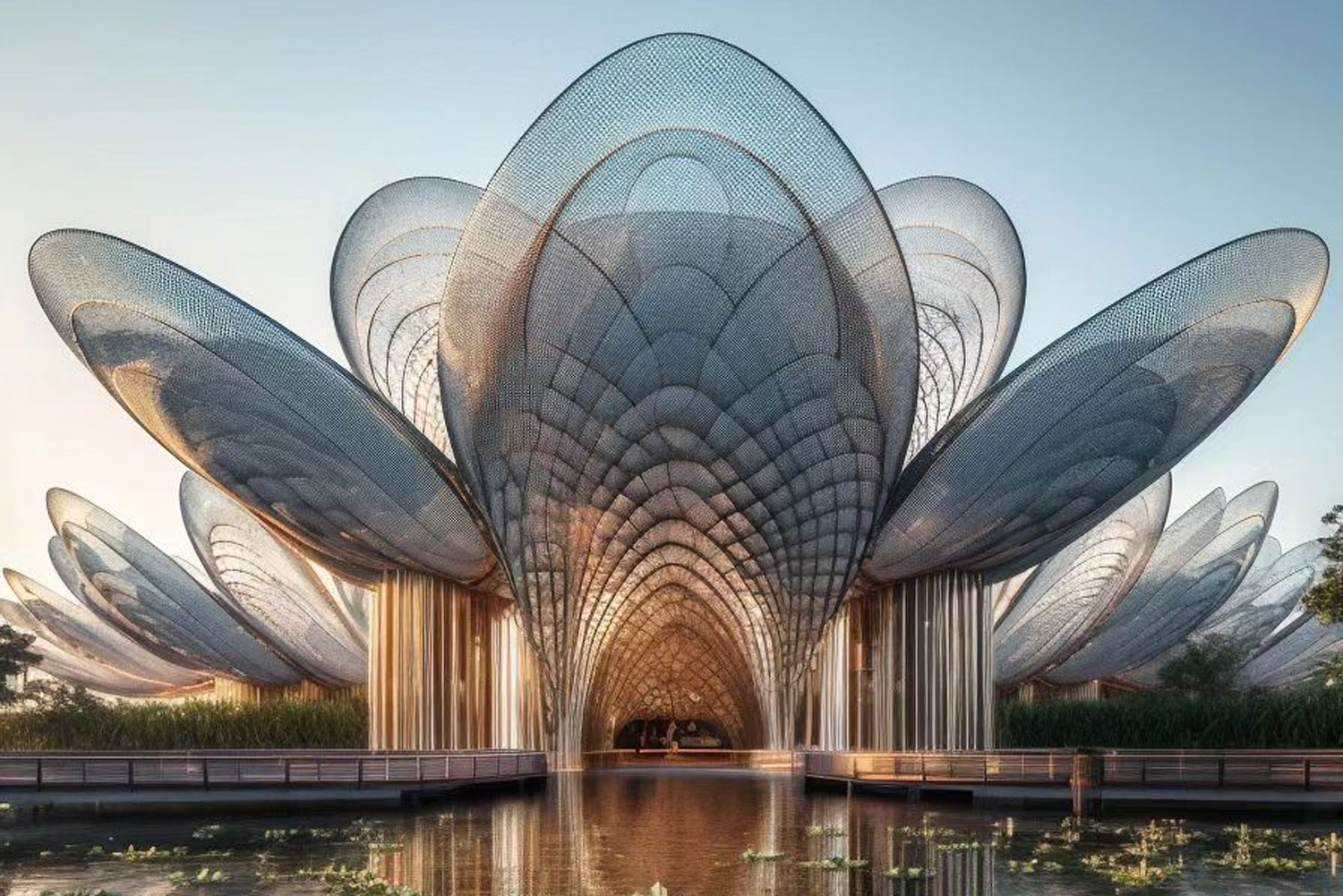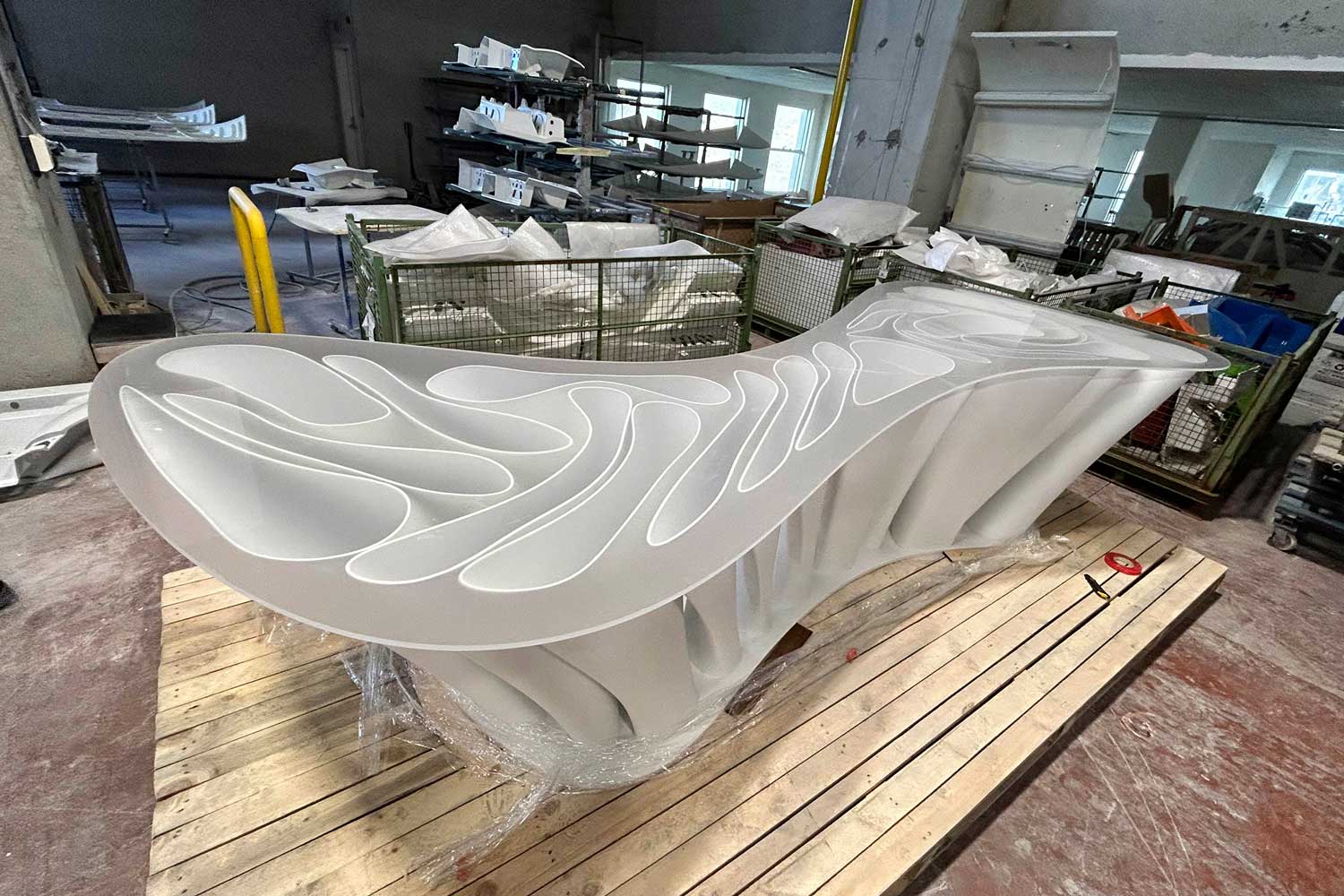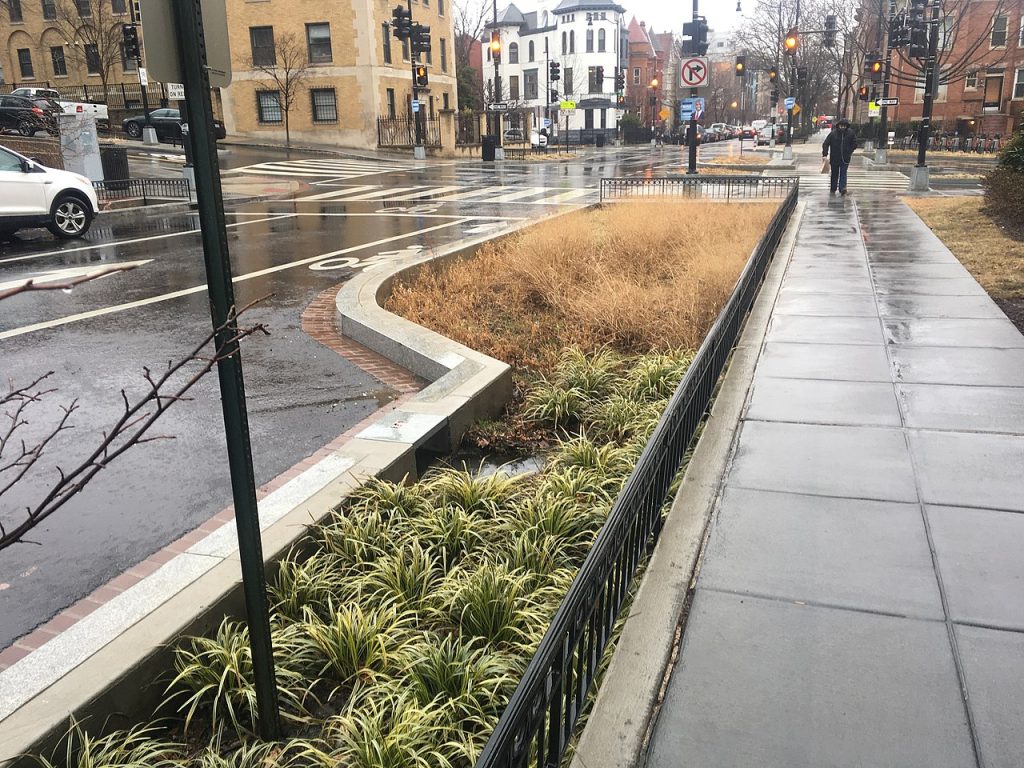
Rainwater collection is a highly increasing subject with the current serious issue of water scarcity. Different harvesting methods for not wasting rainwater have been developed and still developing. These methods are in various forms, from basic rain barrels to complex setups with pumps, tanks, and even purification mechanisms. The untreated gathered water can serve multiple basic purposes, such as watering gardens, flushing toilets, cleaning vehicles, or purification mechanisms while it can also be treated for safe human consumption. The reuse of rainwater plays a vital role in providing water during dry periods while reducing the burden on municipal water supplies, especially in densely populated areas.
While the benefits of collecting and reusing rainwater without wasting it with long processes can be seen, current urban area designs are mostly created to direct rainwater away from the city. Much of the rain is directed to the sewers for disposal because rainfalls on buildings, roofs, roads, and other hard landscaping do not allow it to percolate into soil. Impermeable surfaces in urban areas contribute to flooding and produce polluted water that is diverted away from clean drinking water sources in many regions. During the dry periods, local groundwater can become depleted, and regions can struggle to provide sufficient potable water to meet demand. Harvesting rainwater can reduce both the total amount of freshwater demanded and the load on stormwater infrastructure.
In some regions, localities are encouraged to include rain barrels or other harvesting systems to provide benefits and savings. While the common method for harvesting rainwater in localities is different types of rain barrels or DIY rain gardens, the realization of the emergency and benefits is leading to the inclusion of different rainwater harvesting methods in designs, both in the field of architecture and landscape design.
This article aims to highlight some of the different methods and designs for rainwater harvesting systems. Here are brief explanations about how these systems work and project examples of their integration into landscape design.
Rain Gardens
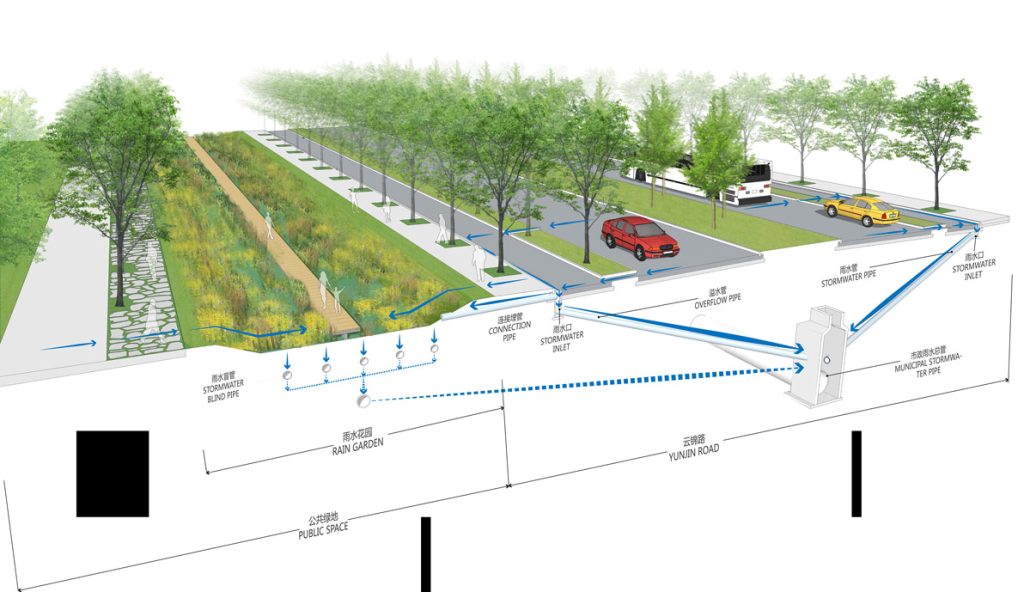
Rain gardens are commonly used methods for rainwater harvesting to reduce the water directly going through sewers for disposal. This method can be used on a wide scale, from residential use in the backyard of a house to large park designs consisting of large gardens. There are different guides for do-it-yourself types of gardens that create an easy application for those interested. These guides include the production of the rain garden’s necessary layers step by step. One of the essential factors in creating a rain garden is the selection of the space, while a low-lying area can seem like a natural for a rain garden, but it needs to be a place that isn’t already overly soggy.
After the selection of the area, size, and shape of the garden, the layerings begin. An excavation starts to create a slope in the garden, if an already lower place does not exist, to provide water capture inside the specified garden. Also, a pipe way can be created to lead the water to the garden from around the area. Mulch and compost layers can be added from the beginning and periodically according to the desire. An underdrain layer can be created to help excess water drain away if the rain garden fills up. After these preference-based layers, there come the key factors of a rain garden, which are the special soil mixture, plantation, and surface mulch. These layers work together to capture, store, filter, and infiltrate rainwater, reducing the risk of urban flooding and improving water quality.
The specific design and composition of each layer can vary depending on the location, climate, and goals of the rain garden. With the wide range of scale that rain gardens can be adapted, different methods for harvesting and reusing can be combined to create more benefits. In large-scale landscaping projects, it is possible to encounter large rain garden applications that are combined with underground tanks.
Edinburgh Gardens Raingarden
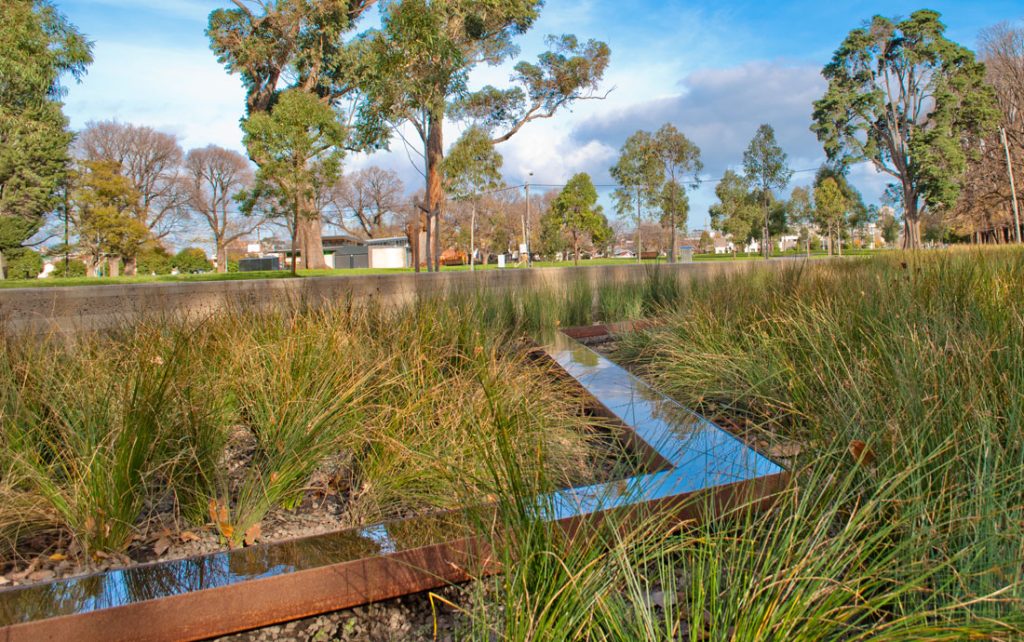
Design Company: GHD Pty Ltd
Location: Melbourne, Australia
Year: 2012
Melbourne has been experiencing the negative effects of water scarcity during dry periods for several years. This project has developed with a side to help increase the reuse of rainwater to irrigate parks and gardens rather than the usage of potable water. The design of the project has been planned to eliminate 16,000 kg of suspended particles annually during its operations while contributing to the removal of an extra 160 kg of nutrients as a result of plant growth. With the operation of this rain garden project, these pollutants and litter will be avoided from Melbourne’s waterways.
The reuse of the filtered water from the garden is being provided from the underground storage tank. The collected water is being used to irrigate existing trees in the Edinburgh Gardens. This provides around 60% of their irrigation needs in a normal year, and it is expected to reduce potable water use for irrigation.
Rain Gardens in Xuhui Runway Park
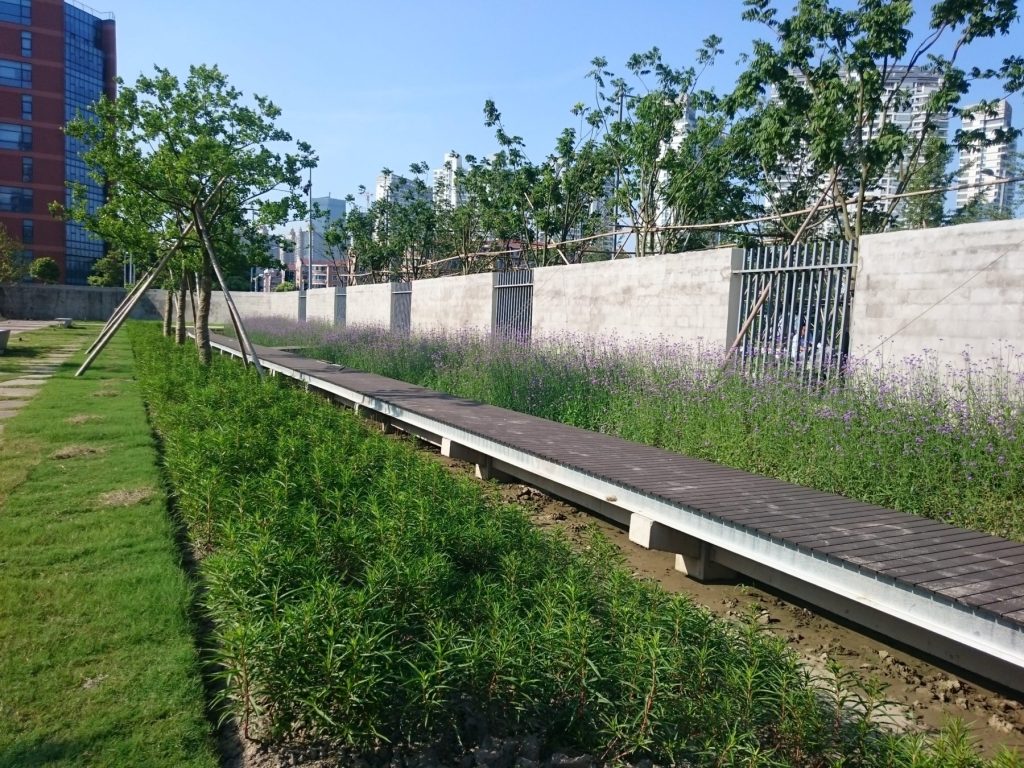
Landscape Architecture: Sasaki
Location: Shanghai, China
Year: 2019
Xuhui Runway Park in Shanghai is an urban revitalization project. The transformation of the runway for Longhua Airport to a green oasis consists of an innovative design scheme that mimics the motion of a runway. The park includes diverse linear spaces for vehicles, bicycles, and pedestrians. The linear organization of spaces highlights the modern life runway experience. The application of different materials, scales, topography, and programs creates diverse spatial experiences.
The fast urbanization of Shanghai can lead to many consequences. One of them can be the water quality issue. The impervious surfaces lead the runoff that contains pollutants directly to the nearby canals without any treatments. This runoff is a major contributor to water quality issues. The Xuhui Runway Park project considers this issue and offers to integrate the stormwater management system into the landscape. This design combines the Yunjin Road, the street parallel, to the park for surface runoff detention, harvesting, and treatment; while providing benefits from the collected and treated water in the recreation area.
Rain gardens in the Runway Park harvest and treat the stormwater runoff from Yunjin Road. The stormwater runoff guided from the road to the linear rain gardens in the park. As the water passes through the gardens, the solids and pollutants are filtered out. Filtered water then pipes into storage tanks for later irrigation usage. The surplus water from the tank drains into the Huangpu River as filtered water.
Bioswales
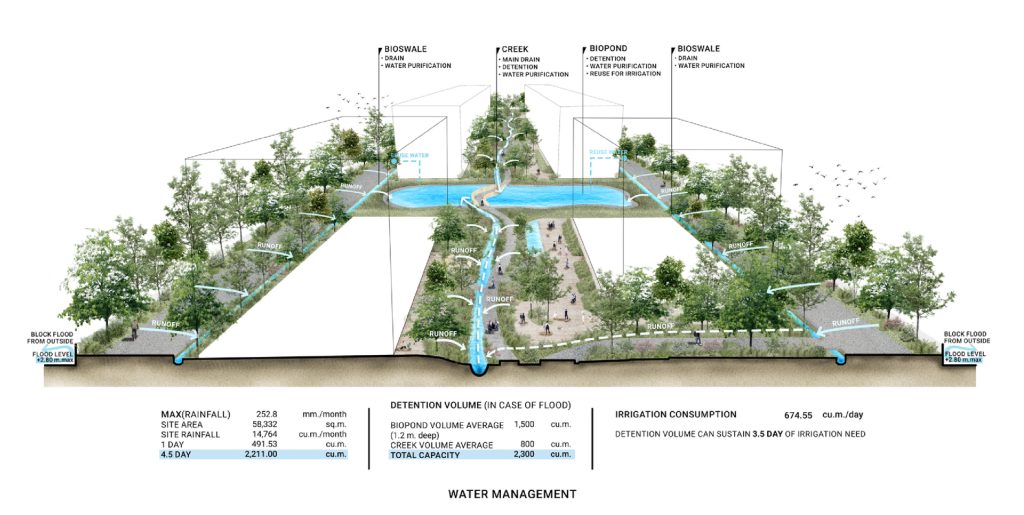
Similarly to rain gardens, bioswales are channels designed to concentrate and convey stormwater runoff while removing debris and pollution. A bioswale has similar layers as a rain garden such as plantations, mulch, and gravels to slow down the rainwater and remove pollutants. A vegetated bioswale looks like a narrow version of a rain garden. The main difference can be specified as that the bioswale is designed to move the water somewhere else in the garden, while the rain garden is specifically designed to increase infiltration. Bioswale can be used to convey water to rain gardens while allowing some of it to infiltrate. In places with no rain garden, bioswale can be used to direct water into existing drainage or stormwater systems after slowing down and removing debris and pollutants.
As a conveyor characteristic of bioswales, they are mostly designed in the shape of roads rather than a pool to create a beneficial pathway for rainwater to slow down and be filtered. It is mostly possible to encounter bioswales in between roads and impervious surfaces, but it is also possible to create bioswales in large garden areas to convey rainwater to the larger rain gardens or storages for further usage. Common and beneficial usage of both bioswale and rain gardens occurs with a combination of different methods of rainwater harvesting.
Jin Wellbeing County
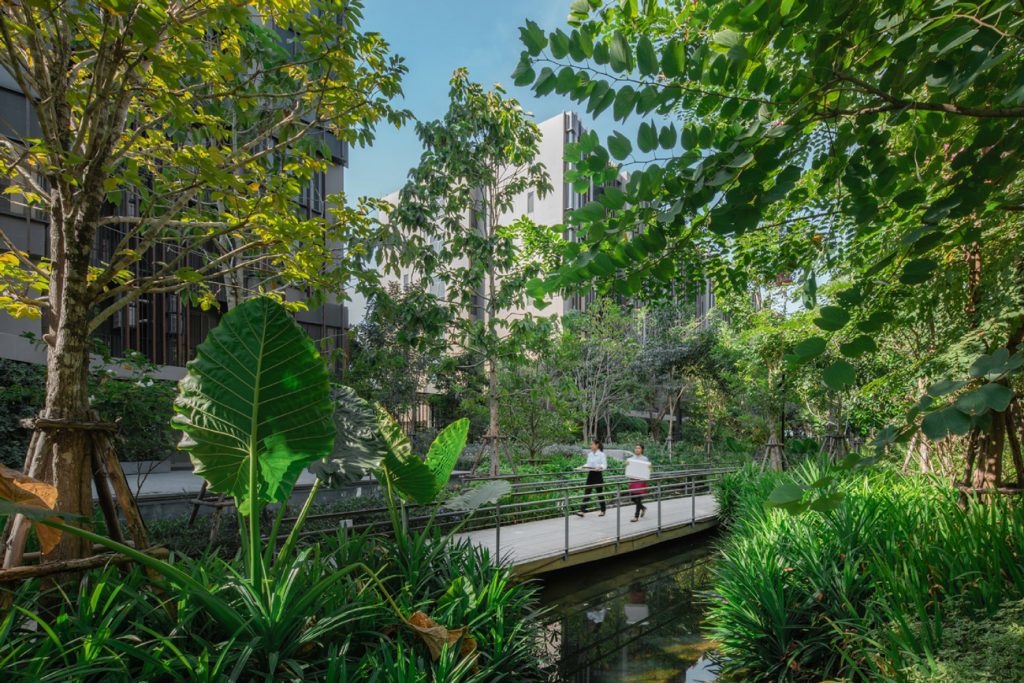
Landscape Architecture: Shma Company Limited
Location: Prachathipat, Thailand
Year: 2020
Jin Wellbeing County is the first senior-oriented mixed-use development in Thailand with the inclusion of residences, commercial units, and hospitals. It is located in the Chao Phraya Flood Plain, a suburb of Bangkok that was previously known as an agricultural lowland and gets flooded seasonally. However, the site became urbanized by rows of buildings, housings, and infrastructure, leaving the possibility of severe flooding. While flooding and rainwater flows are important issues for the site, the project includes a detailed design part for water management.
The project aims to create a new typology for future communities by focusing on three principles; ‘Sustainable Nature’, ‘Physical Well-being’, and ‘Sense of Community’. Considering these principles, the design team creates a unique ecology for the project. While the project includes 22,485 square meters of green spaces, the detailed design of the water management system contributes to the irrigation needs in line with sustainable nature principles. In the forest-like atmosphere of the area, a variety of plants are growing. Through the middle of the site and plantation, the project includes a creek as a main drainage and treatment system. Around the creek, bioswales gather the runoff water from the outer part. The primarily infiltrated water from bioswales flows into Bioponds that are used for retention and secondary treatment. The water management systems help handle floods during rainy periods and provide water for dry seasons.
Daiichi Mutual Insurance Shin-Ohi Office Landscape
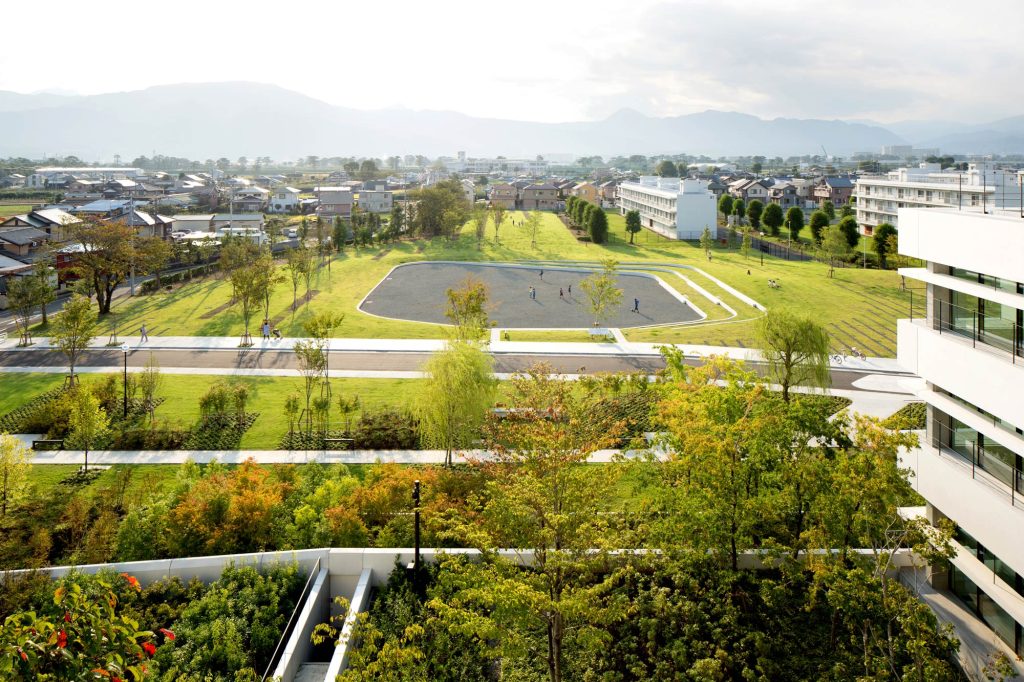
Landscape Architecture: WRT
Location: Kanagawa, Japan
Year: 2012
The “Working in a Forest” design concept led the project to be in a greenery-healthy working environment. The site of the project is located 40 miles outside of Tokyo in a small town surrounded by rice fields, mountains, and coastline. Takenaka Architecture is the project architect while WRT undertakes the landscape design.
Designed with larger green areas for creating the feeling of a forest, WRT planned three distinct parts as landscaping: The entry park, the interior courtyards, and the west gateway park. The greenery, the trees, and the sculpted topographic forms provide a natural security barrier and distinguish the border. The bioswales used in this project can be mostly seen between hardscapes such as car parking and pavement areas. Which can contribute to the harvest of rainwater and runoff from these hardscapes through drains with primary infiltration.
Permeable Pavements
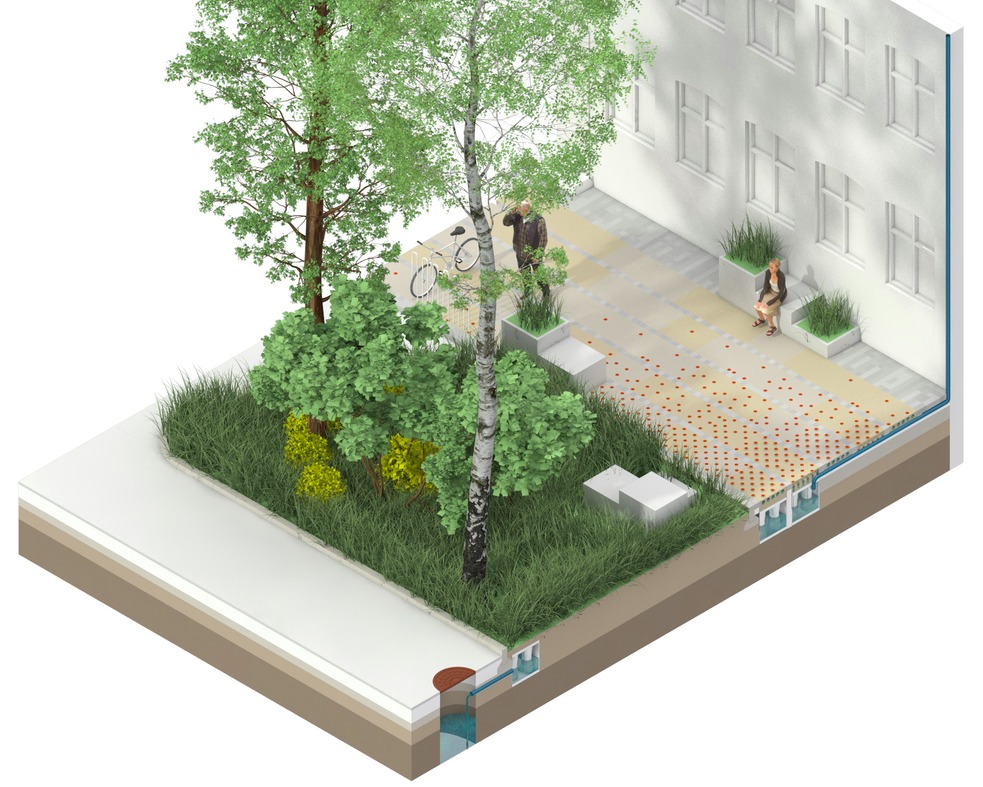
One of the biggest problem contributors to stormwater runoff issues is the impervious surfaces. When the surface cannot capture any rainwater rather it leads its way directly to the drainage system, the rainwater that can be reused by simple filtration can get polluted and mixed with the wastewater canals. A simple approach such as creating porous pavers and spaces can help to capture, reuse, or re-give the rainwater to nature. Implementing permeable pavers as they are can allow the rainwater to flow through nature again, and prevent overflowing during strong rain. With the development of different systems, it is possible to implement permeable pavers in combination with different methods such as underground tanks and primary filtration, and with this implementation, the captured water can be reused.
The widely used permeable pavement surfaces are interlocking concrete, Turfstone, and porous asphalt. These types of surfaces help to minimize stormwater runoff. With the combination of underground tanks and irrigation pumps, this method can help the reuse of water for irrigation in the near greeneries. While these surfaces can create unpleasant situations during strong rains, innovative materials in this subject are continuously on the agenda of landscape design in line with sustainable urban drainage systems.
Climate Tiles
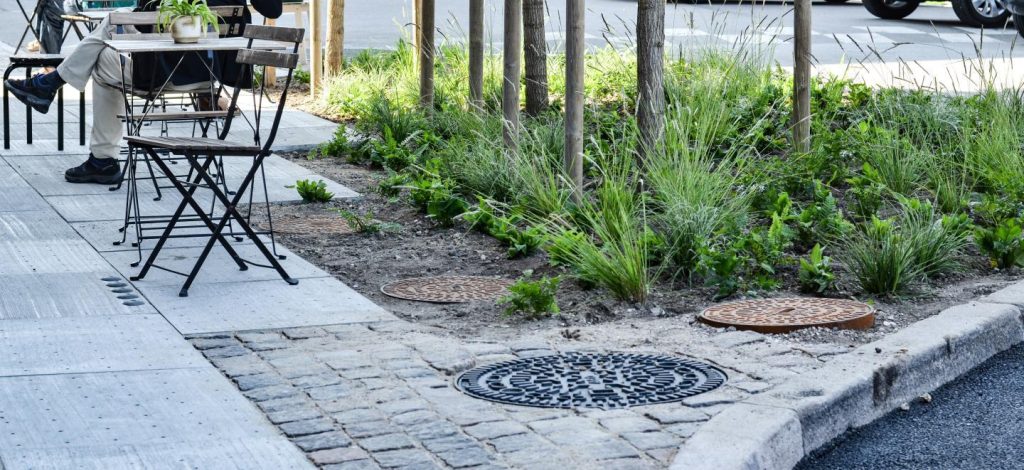
Designers: THIRD NATURE
Location: a 50m pilot sidewalk in Copenhagen, Denmark
Year: 2018
The Climate Tile is an innovative approach to sidewalk surfaces. It is a scalable pavement system that serves as a climate adaptation for future cities. The project gives sidewalks additional capabilities. With Climate Tiles, they will not only treat water in just a technical manner but also highlight the water as a valuable source. With the simplest process, the Climate Tile captures rainwater from the roofs and sidewalks and ensures that the water runs to the right place. While preventing overloads within the drainage infrastructure, it can catch and redirect an extra 30% more rainwater. The team explains the project as the development of future sidewalks that will collect and manage water, whilst contributing to the growth of urban nature and improved microclimate, thereby generating added value for the citizens and raising the level of life quality and general health within the city. The project is seen largely as an inclusive solution in synergy with both roads, bike paths, signage, urban furniture, town squares, urban nature, and more.
Ulta Chaata (inverted umbrella)
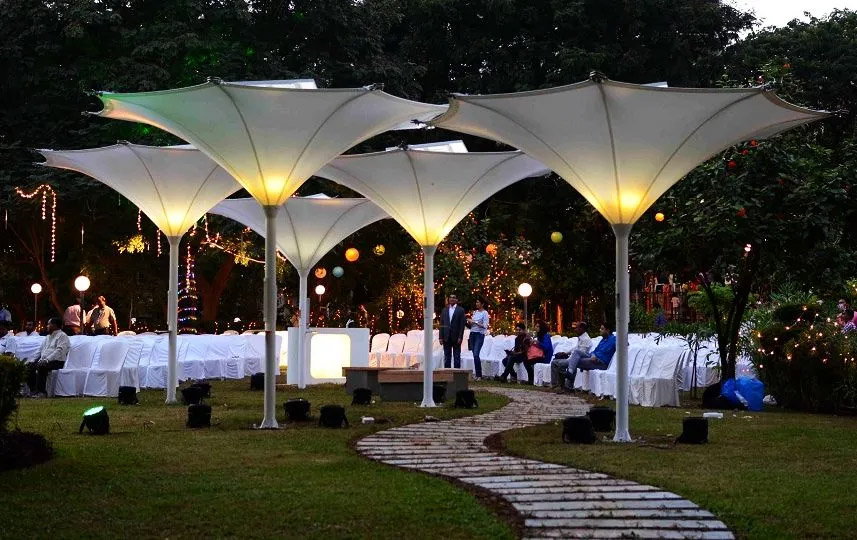
Ulta Chaata is an innovative method for harvesting rainwater and solar energy. Ulta Chaata is the first project released by Think Phi, a startup focusing on green technology formed by Samit Choksi and his wife Priya Vakil Choksi in 2015. They worked on the subject of sustainable design in Singapore, London, Atlanta, and San Francisco. The trigger point for their innovation starts after their return to India. As in Samit’s words; “After moving back [to India], we saw that the pollution and the increasing climate change are major reasons for concern in India. The one thing that struck us was that we get heavy rains here and yet all this water is getting wasted…”
The Ulta Chaata is a product that harvests and treats rainwater for drinking while also capturing and producing solar power. The couple aimed to create a product that can be a solution for two major problems; energy and water scarcity. Ulta Chaata means inverted umbrella in Hindi which is the shape of the design. The process of the Ulta Chaata begins with the fall of rainwater on the top of each umbrella, then the water goes through the first level of physical filtration with leveled meshes. After the primary treatment, the water reaches the common storage of all umbrellas which is called the Phi Box. The Phi Box has UV filters and activated carbon filters that create the treated version of the rainwater. After this stage, the water becomes potable and is stored in a tank.


